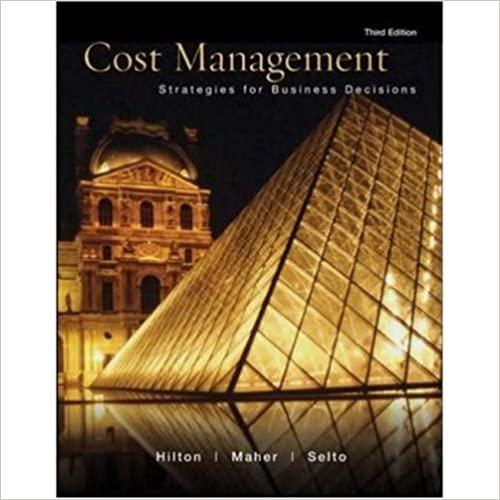Question
This question is concerned the production behavior of a competitive firm under market price uncertainty. Rather than facing a known market price the firm faces
This question is concerned the production behavior of a competitive firm under market price uncertainty. Rather than facing a known market price the firm faces many possible prices distributed according to a known probability density function, f(p), with mean price . The firm must take its output decision before the actual market price is realized. Suppose that the firm has a von Neumann-Morgenstern utility of profit, U(), where U'(.) > 0 and U"(.) < 0. Also assume that the total cost function of the firm is TC = C(x) + B, where C(x) represents variable costs and B fixed cost. The firm's objective is to maximize the expected utility of profit.
a. Set up the expected-utility-of-profit maximization model for the firm and derive the first- and second-order optimality conditions.
b. Provide a comparative static analysis to compare the optimal output of the competitive firm under market price uncertainty to the output under the situation when the market price is known to be equal to . Discuss the implication of your analysis.
c. It is well known in the theory of firm under price certainty that an infinitesimal change fixed costs of production does not affect the optimal level of output of the firm. Is this also the case under market price uncertainty?
d. Define "a small increase in risk" as a "stretching" of the probability distribution of the market price around a constant mean. That is, an increase in risk is treated as "an increased variability" of the density function of the market price in terms of a "mean preserving spread". Examine the effect on the optimal output of the competitive firm when there is a small increase in risk.
e. How would the firm adjust its output in response to a change in the expected market price? (To analyze this question, first let price be written as p + , where is an additive shift parameter. As a result, a change in shifts the probability distribution to the left or to the right and changes the expected value of price without altering the shape of the probability distribution. Then examine how the change in would affect the firm's optimal output under price uncertainty by deriving the comparative-static derivation dx/d.)
Step by Step Solution
There are 3 Steps involved in it
Step: 1

Get Instant Access to Expert-Tailored Solutions
See step-by-step solutions with expert insights and AI powered tools for academic success
Step: 2

Step: 3

Ace Your Homework with AI
Get the answers you need in no time with our AI-driven, step-by-step assistance
Get Started


